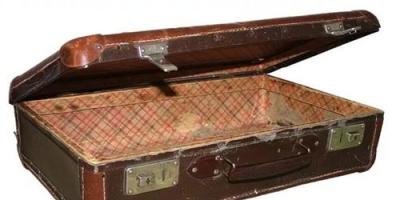Glasses for myopia - safe and affordable way vision correction. In order for their use to have an effect, but not lead to a deterioration in the condition of the eyes, an ophthalmologist, and not an employee of an optical store, should select glasses.
The selection of glasses for myopia is carried out by a specialist after establishing an accurate diagnosis.
To check your vision, you go through 6 diagnostic stages.
To reliably test visual acuity, you need to go through several diagnostic stages with an ophthalmologist
Ophthalmologist:
- determines the initial visual acuity of each eye;
- measures intraocular pressure;
- assesses the ability of both eyes to see images clearly;
- measures visual acuity using negative lenses;
- examines the field of view;
- assesses the condition of the retina with a wide pupil.
After a full examination, including viziometry, ultrasound, refractometry, and other techniques, the doctor identifies the degree of the disease and writes a prescription for myopia-correcting glasses.
It is difficult for a non-specialist to determine which lenses are required: plus or minus. Early stages diseases allow the use of plus ones intended to correct farsightedness, but they are used after consulting a doctor.
During the examination, a deviation from the norm in both eyes may be revealed: one has difficulty seeing distant objects, the other cannot see nearby objects. Then lenses are prescribed that are used to simultaneously correct farsightedness and myopia.
Selection rules
Glasses for myopia are prescribed based on the severity of the pathology.
Initial
The deviation ranges from –1 to –3 diopters. Do I need to wear glasses? The first stage does not cause discomfort: a slight deviation does not affect vision. The use of glasses to treat myopia is recommended in individual cases. They are worn only when necessary: during school classes, lectures, and watching TV.
For mild myopia, bifocal glasses are suitable: putting them on, the patient begins to clearly see objects located near and far.
Average
If the deviation is from – 3 to – 6 diopters, glasses are prescribed for constant wear. The second degree is characterized by the ability to poorly see distant and nearby objects; correction is required.

Moderate myopia requires constant correction
The doctor prescribes an additional pair: the first is for distant objects, the second is needed for myopia in order to clearly see nearby objects. Which glasses are more comfortable? Bifocal: their peculiarity is that objects located in the distance are viewed through the upper part of the glass, objects at a close distance are clearly visible through the lower part.
High
If the deviation is more than -6 diopters, glasses must be worn at all times.
At the last stage of myopic disease, visual function cannot be restored completely; are used to provide the maximum possible visibility.
Myopia with astigmatism
Myopia sometimes develops against the background of an illness that causes visual blurring of surrounding objects. Vision correction is carried out using glasses or contact lenses for astigmatism.

Myopia with astigmatism can also be corrected with glasses
Made from modern materials Astigmatic lenses do not limit the view, retain the correct outlines and proportions of objects located far or near.
Wearing Features
If vision problems arose in childhood, the child gets used to having to wear vision accessories.
When diagnosed in adulthood, it is more difficult to get used to the need to wear a vision-correcting accessory. Adults prefer contact lenses for myopia.
To facilitate the process of adaptation, the ophthalmologist has the right to write a prescription for weak glasses, since a sharp improvement in vision causes fatigue. The optimal solution is perifocal lenses for myopia. They ease the strain on the eyes, and the process of vision deterioration slows down or stops.

Many patients choose contact lenses as vision correction.
Lenses for myopia
Selecting lenses for nearsighted people is a difficult process for a non-specialist; The doctor has sufficient qualifications to determine which ones are suitable in a particular case.
They are:
- Mineral. Thin in the middle, thickening at the edges. Advantages of glass products: scratch resistance, complete transparency. Keep in mind that they are heavier than plastic ones; another feature is their fragility.
- Plastic. They are stronger, lighter; used to correct children's vision. Among the disadvantages: the surface is susceptible to scratches, plastic lenses have weak optical power.
To find out how to choose glasses to correct myopia, contact an ophthalmologist.
Frame
Selecting lenses is the task of an ophthalmologist, but you are allowed to choose a frame yourself.
Correctly selected frames for glasses for myopia are comfortable and fit securely.

To ensure that your glasses are comfortable to wear, take the time to choose a frame that is comfortable for you.
The frame is made using:
- Plastic. The material is used to create lens frames designed to correct severe myopia. Thick lenses are heavy lightweight plastic the frame reduces the overall weight of the accessory. Among the advantages: choice of color, ability to print. Original product will highlight makeup under glasses.
- Metal. Metal frames are used for thin lenses that correct mild myopia. Finished goods elegant, but the choice of frame color is poor.
Rimless lenses are used to correct mild to moderate myopia - thin lenses do not require reliable support.
Wearing rules
There are no strict rules on how to wear glasses at the first stage of myopia. Focus on their own feelings. At the first signs of fatigue or tension, remove the accessory.
It is not recommended to completely stop wearing glasses - the eyes experience increased stress. Regular stress can provoke the development of an illness that will have to be treated.

Do eye exercises daily
Important! Myopia is divided into true and false. The first - anatomical - is caused by a weakening of visual function. Glasses are worn constantly to stop the process of vision deterioration and restore the ability to clearly see surrounding objects.
False caused by weakening eye muscles, it is not recommended to constantly use optics - the muscles must be trained, otherwise the disease will turn from temporary into chronic.
Signs of incorrectly selected lenses
Independent choice glasses leads to problems.
When wearing lenses whose optical power is many times higher than required, the following symptoms may occur:
- nausea;
- headache;
- dizziness.
If such phenomena continue a week after starting to wear new lenses, consult a doctor. This is a sign of incorrectly selected glasses, which causes eye strain, causing pain.

If you get a headache after wearing glasses, it means your glasses are not fitted correctly. Contact your ophthalmologist.
A correctly selected optical device corrects vision and improves the quality of life.
Fashionable frames and a choice of models make it possible to find a suitable accessory that does not detract from your appearance. You can choose special makeup for glasses that emphasizes the beauty of the eyes behind the frames.
Lenses made of polycarbonate are worn during active sports – they are durable and scratch-resistant.
Having learned how to wear glasses correctly for myopia and applying the acquired knowledge in practice, you can avoid further development of the disease.
Dec 21, 2016 Doc
When you need to wear glasses is determined directly by the ophthalmologist. He makes this decision only after a series of diagnostic examinations.
- Myopia (myopia). The image is formed in front of the retina. As a result, the patient has difficulty seeing objects that are in the distance. With such a pathology, it is necessary to wear glasses with a minus value.
- Farsightedness. The image is formed behind the retina. As a result, the patient has difficulty seeing objects in front of his eyes. Plus lenses are prescribed.
- Astigmatism. This is a disorder in the visual apparatus, which is formed due to the irregular structure of the cornea or lens. With this defect, several images are created on the retina. Because of this, objects before the patient’s eyes begin to double and blur. In this situation, toric or cylindrical lenses are used for correction.
- Heterophoria. This visual defect is also called hidden strabismus and with it there is a certain deviation of the eyeballs from parallel axes.
- Aniseikonia. The images have different sizes on the retina of one and the other eye. The person also experiences difficulty reading, there is a disturbance in the perception and correlation of different objects, and rapid fatigue of the eyeballs.
- Presbyopia, i.e. age-related farsightedness.
What level of vision requires glasses?
The ophthalmologist decides for which vision the patient needs to wear glasses individually. This is influenced by factors such as age and the disease itself.
Visual acuity is measured in diopters. This is the refractive power of the light flux.
For myopia
Thanks to special studies, it was revealed that (myopia) must be worn when working or watching TV with visual acuity from -0.75 diopters to -3 diopters. If the patient's vision is -3 or more, optics are prescribed for constant wear.
In addition, myopia is divided into two types: accommodative and anatomical. With anatomical form, wearing glasses is necessary. This is due to the fact that such pathology tends to progress. Vision correction optics can prevent this. With the accommodative variety, the task of the treating specialist is to strengthen the muscles of the visual apparatus. In this case, wearing glasses can be harmful, since the muscles relax in this case. The best solution would be to perform special gymnastics for the eyes.

For farsightedness
Glasses for farsightedness (hyperopia) are prescribed at values of +0.75 diopters. They can be prescribed for both temporary and permanent wear. If the patient does not have concomitant eye diseases (astigmatism, myopia, etc.) and objects lose their contour only at close range, the patient is prescribed optics for temporary use. They are worn when reading, writing, working at the computer, watching TV, managing vehicle and for small work.

The decision to make adjustments using glasses is made by the doctor individually for each patient. Even with poor vision, if this does not bother you in any way, corrective optics may not be prescribed.
Do I need reading glasses?
Namely, this is the name given to the age-related deterioration in visual acuity, which initially manifests itself as fatigue in the eyes, which occurs mainly in the afternoon or when poor lighting. Over time, migraines may occur, which appear after reading a book or working at the computer. This symptom appears due to increased tension in the eyes. To prevent them from overexerting themselves, it is necessary to select special ones. With their help, a person will not only be able to get rid of unpleasant symptoms, but will also be able to parse the text much better.
Since the progression of presbyopia cannot be reversed through special exercises or other means, special glasses or contact lenses can be selected. Noticeable deterioration of vision mainly occurs after 50 years, and then this process slows down. This is why it is necessary to visit an ophthalmologist once a year, since during this time your vision may change and you will need to choose different glasses.
As for reading glasses, they come with increased visibility and regular ones. An ophthalmologist may also prescribe bifocals, office glasses, or progressive glasses. If you don’t want to wear them when reading or working in front of a monitor, you can use lenses that are also progressive and monovisual (one lens is designed to improve distance vision, and the other corrects near vision). An optometrist can help you choose the right glasses or contacts. As a rule, they come with a slight plus (+0.5), but after a couple of years it may be necessary to strengthen them by +2.0 diopters.

How does a doctor determine the need for correction?
The ophthalmologist sits the patient at a distance of six meters from a special ophthalmological sign and asks to read the letters on it. If the patient sees less than seven lines out of ten, then the doctor prescribes additional diagnostic measures.
After all the research carried out, the specialist decides on the need for corrective optics. To choose the right glasses for glasses, the ophthalmologist presents test glasses to the patient’s eyes. Starting with the thinnest. Glasses are prescribed for glasses that allow the patient to see objects clearly.
 Tables of Sivtsev, Golovin and Orlova
Tables of Sivtsev, Golovin and Orlova Under no circumstances should you wear glasses without the advice of a specialist. This can only worsen your vision and provoke the development of various eye diseases.
Glasses for myopia are necessary for those who suffer from a common visual impairment - myopia. This condition is characterized by the fact that a person can clearly see objects located nearby, but cannot clearly see those objects that are far away. On different stages Myopia requires different glasses. The selection of the necessary ones is carried out by an ophthalmologist who conducts a number of necessary examinations. If there are no contraindications, glasses for myopia can be replaced with contact lenses. This is especially true for those who play sports.
Advantages and disadvantages of using glasses for myopia, treatment with orthoptics
Before prescribing a vision correction product to a patient, the doctor carries out the following diagnostic measures:

- assessment of vision of the left and right eyes separately;
- determining the necessary correction of myopia depending on its stage. This is done by using negative lenses;
- binocular vision assessment;
- applying varying degrees of load on the eyes, which allows you to choose the right model for myopia.
When purchasing, you should consider the following features of glasses designed to be worn for myopia:
- their lenses are thinner in the center. Closer to the edges they thicken;
- the optimal lens material for glasses needed for myopia is mineral glass;
- With complex myopia, the glasses in the glasses are thick, so their frame must be appropriate so that it can withstand all the loads.
Rimless glasses can only be worn for mild myopia.
What to choose – good glasses or better lenses?
Many people find it more convenient to use lenses, but do not know for sure whether it is acceptable to use them in case of myopia. He will tell you about the treatment of convergent strabismus.


From an aesthetic point of view, the glasses are clearly inferior.
Other benefits of eye lenses include:
- no anxiety when wearing them. When a person wears glasses, there is always a risk that in unexpected situations they will break and the fragments will penetrate directly into the eyes. There will be no such problems with lenses: if you learn how to put them on correctly, then there will be no discomfort and you can literally forget about them;
- no inconvenience when playing sports and active lifestyle;
- no limitation of peripheral vision, which cannot be said about glasses;
- no need to take certain measures (wiping).
At the same time, one cannot fail to mention the disadvantages of eye lenses:
- the need to remove the optics every day in the evening and put them on again in the morning. This process requires some experience, since if the installation is incorrect, a feeling of discomfort arises, due to which the patient does not feel improvements in the functioning of the visual apparatus;
- discomfort and allergies that may occur in response to wearing lenses for colds, causing tears to flow and become inflamed;
- the need to periodically replace lenses, which requires significant financial costs.
Lenses are often considered a worthy alternative glasses, but their use is most justified under the following conditions:
- the patient is actively involved in sports;
- the patient's working conditions require low temperatures or constant physical activity;
- no contraindications to wearing contact lenses.
Glasses are chosen if the patient has contraindications to wearing lenses:

- strabismus with an angle of more than 15 degrees;
- conjunctivitis;
- dryness of the cornea and conjunctiva;
- keratitis;
- ptosis;
- increased or decreased tear production.
It is also not recommended to wear lenses for diseases such as tuberculosis and AIDS.
If visual impairment occurs in childhood, then, as a rule, glasses are prescribed, not lenses. Read about electrical eye stimulation in children.
Wearing mode - how to use glasses and whether they need to be worn constantly
Another issue related to wearing glasses for myopia is the mode. It all depends on how severe the visual impairment is. Read about the prevention of myopia in children.

For moderate myopia, glasses should be worn at all times to prevent severe eye muscle strain.
But in this case, there is an exception: they do not need to be worn if visual work is performed at a distance not exceeding 40 cm. Find out about high myopia.
With a high degree of myopia, it should also be worn constantly, and the patient should have several types of glasses at once - models for regular wearing, writing and reading, and working at the computer.
Video
This video will tell you in detail how to choose the right glasses.
conclusions
- Glasses for myopia are also indicated for wearing with moderate and severe degrees of deviation. They can be different types: for regular wear, computer work, corrective.
- Only a specialist, based on the results of the examination, determines the occurrence of myopia, prescribes glasses with the necessary lenses.
- Depending on the availability of indications and the rhythm of life, you can choose myopic glasses and lenses.
The debate about whether it is possible to permanently use glasses correction for myopia has been going on for several decades. According to one version, with a mild degree of the disease, constant correction can correct vision and not lead to progress. On the other hand, on the contrary, it can lead to progressive changes. Patients argue more often, but sometimes doctors do too.
What are glasses for?
Glasses are an ophthalmological device designed to correct vision defects through the use of optical lenses that compensate for improper refraction of light rays. The advantage of glasses, also for a person with visual impairments, is to reduce eye strain, reduce fatigue and, as a result, reduce the rate of progression of the disease.
Glasses will not help you cure myopia, but they will help stop the progression and ensure visual acuity. Unfortunately, many patients try to wear them only when absolutely necessary, believing that glasses spoil their appearance. In fact, this is a common misconception. Beautiful and fashionable frames for glasses can now not only be a necessity, but also an accessory that complements and improves the appearance. The main thing is to choose the right style.
When should you start wearing glasses?
There are two types of this disease:
Anatomical myopia, expressed in pupil deformation;
Accommodative myopia, which appears as a result of weakening of the eye muscles responsible for the optimal elasticity of the lens, but the shape of the pupil does not change.
With a weak degree of anatomical myopia, you can not use eyepieces, but it is imperative to monitor your health, as the disease may begin to progress. And if this happens, you will no longer be able to do without glasses.
In the case of accommodative myopia, things are a little different. Constantly wearing glasses will play a cruel joke on you, as it will cause subsequent degeneration of the eye muscles. As a result, with prolonged use of eyepieces, they completely take over the function of your vision, completely correcting the deficiency.
How to be?
First of all, make it a rule to visit the ophthalmologist's office as often as the dentist's office. A timely detected problem will allow you to take action to prevent the development of the disease. In addition, you should not neglect the doctor's prescription.
Unfortunately, many patients only nod in the ophthalmologist’s office and undertake to comply with all instructions. But, having come out of it, they begin to perceive it all simply as advice that they don’t have to follow. As a result, very often the consequences are irreversible.
Nearsightedness (myopia) is the most common vision problem. According to statistics, 4 out of 10 people suffer from this problem. To correct this problem, experts recommend using glasses for myopia.
Glasses for myopia
If we look at the design of such glasses in more detail, then we can understand that they use special concave diverging glasses. With their help, you will have a wonderful opportunity to refract light rays so that the focus of the object falls directly on the retina. Thanks to this, the object that a person is looking at will be clearer. In this article, we tried to figure out how to choose glasses for myopia.
Features of glasses for myopia
Most often, with first-degree myopia, experts will not prescribe glasses. Glasses for myopia can be prescribed only if a person feels discomfort. If doctors prescribe glasses, then they should be such that they can provide 100% vision in the future.
 Three degrees of myopia
Three degrees of myopia
For moderate myopia, specialists may prescribe glasses for permanent use. This is due to the fact that with such indicators of the disease a person will have difficulty seeing. For close work, a second pair or bifocals may also be prescribed.
In cases of high myopia, plus myopia glasses will also be prescribed for permanent use.
It is important to know! With a significant number of diopters, the patient will experience intolerance to full correction. Therefore, the ophthalmologist prescribes a correction based on tolerance. Accordingly, the patient will not receive 100% vision, but one with which he will be as comfortable as possible.
If glasses for myopia are prescribed in childhood, then in most cases they are well tolerated. It can sometimes be quite difficult for adult patients to get used to wearing glasses. They may be prescribed weak glasses so as not to cause eye strain.

Spectacle glasses
Glasses for myopia correction may have a number of specific features. Therefore, when choosing such products, you need to consider the following recommendations:
- The peculiarity of the lenses is that they are thinner in the center and improve at the edges.
- Most often, manufacturers use mineral glass to make lenses for myopia.
- Today, a lot of manufacturers have begun to produce plastic lenses for glasses for myopia.
- Polycarbonate lenses for myopia are quite lightweight and scratch resistant.
Choosing a specific type of glass for myopia depends on your personal needs, as well as cost.
Frames
Frames for glasses for myopia can be quite varied. The most common are: plastic, metal and rimless glasses. Here are the main recommendations from experts:
- It is necessary to choose the type of frame depending on the severity of myopia. If the lens is thick, then accordingly you should choose a durable frame that can withstand all the loads.
- The plastic frames are quite wide. This frame is perfect for people with severe myopia.
- Metal frames are most suitable for people with moderate myopia.
- Rimless glasses can only be used for mild myopia. These glasses most often use lenses made of mineral glass, which is lightweight.
How often should you wear it?
If the stage of development of myopia is weak, then you need to wear glasses for myopia intermittently. This will help you avoid eye strain in the future. The only exception in this case is considered to be working at a distance of no more than 40 cm. A high degree of myopia will require the regular use of glasses for myopia.
Now you know exactly whether you need to constantly wear glasses if you are nearsighted, as well as what types of similar products are on the market. We hope that this information was really useful and interesting.








